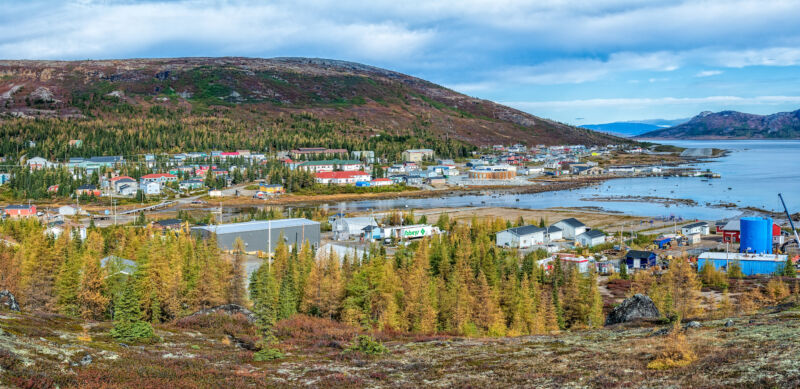
Enlarge / The town of Nain. (credit: Dennis Minty/Adventure Canada)
Moravian missionaries arrived in Canada in the 1700s, forever altering the future of the country's Inuit population. Beginning in the 19th century, Inuit children were taken away from their families and forced to attend residential schools (boarding schools), where they were not allowed to speak their own language. In the 1950s, thousands of Inuit in Nunatsiavut (the easternmost of Canada’s four Inuit regions) were forcibly removed from their land and stripped of their native language and customs. As a result, a generation of students that lost their culture gave birth to children who are now, themselves, searching for new ways to reclaim it.
Restoring that culture is a challenge, because many Inuit currently live in remote communities that lack roads and transportation infrastructure, leaving them isolated from each other. But technology has started helping them to connect with other Inuit across the country, to preserve traditional cultural practices, and to create a space for young people to learn about and participate in their heritage.
Of the 65,000 Inuit spread across Canada, about 7,200 are Labrador Inuit. About a third of these Labrador Inuit reside in Nunatsiavut, which has five major Inuit communities scattered along the coastline of Newfoundland Labrador province. None of the communities are connected to each other—or to anywhere else for that matter— by road, and they can only be reached by airplane or boat. Nain, with a population of approximately 1,200 people, is the largest and northernmost Inuit community.
Read 35 remaining paragraphs | Comments
from Tech – Ars Technica https://ift.tt/3hUUf31
No comments:
Post a Comment